Ancient Egypt, the land of mysticism, is one of the oldest and most culturally rich civilizations of all time. It is one of the only ancient civilizations that has managed to capture the imagination of scholars as well as ordinary people. The mystery surrounding its origins and its overwhelming achievements later has always managed to confuse scientists. The ancient Egyptian architecture, especially the pyramids and the sphinx, still manages to leave scientists confused about how ancient Egyptian peoples managed to create such enormous structures.
Ancient Egypt was one of the longest civilizations in world history. Civilization merged around 3150 BC, but the earliest cases can be dated back to the 4th millennium BC. Civilization probably survived until 332 BC. until it completely collapsed, leaving a trail of legends and myths.
Geographical aspects of ancient Egypt

Just as life arose from the water, the seeds of civilization were first sown along the banks of the Nile. At that time, ancient Egypt was like an oasis in the middle of the deserts of northeastern Africa. It relied entirely on the annual flooding of the Nile to support its agricultural aspects. Civilization used to extract its main wealth from the fertile floodplain in the Nile Valley. The area was stretched out from where the river used to flow between bands of limestone hills and the Nile Delta, where present-day Cairo is located. The Nile was also the only transport artery in ancient Egypt.
The Great Egyptian Borders
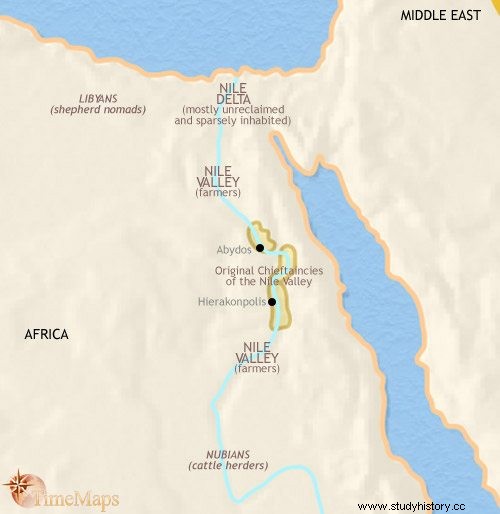
Civilization had a well-defined border at the first cataract, where the river bed had become a belt of granite. To the south, the area was guarded by the less hospitable area of Nubia. In this area the river ran low sandstone slopes and in most areas it left a very narrow strip of arable land. The Sahara desert guarded west of the Nile. The eastern desert between the Nile and the Red Sea was the most important area. In this area there were apparently a small number of nomads. The northeastern part of civilization was probably guarded by the Isthmus of Suez.
Even after being bounded by the impenetrable desert in the southern, eastern and western areas, ancient Egypt flourished well using the Nile and the sea from the north. The area also provided protection from external influences to the flourishing civilization for a long time.
The social system of ancient Egypt

As with most, if not all, civilizations from the beginning of recorded history, the ancient Egyptian civilization had a strict social structure. The society of ancient Egypt was strictly divided into a hierarchy with three main social classes. The classes were divided into upper class, middle class and lower class. The upper class consisted of the royal family, wealthy landowners, officials, important priests and army officers and doctors. The middle class population consisted mainly of merchants, producers and craftsmen. The underclass, which was by far the largest class, consisted mostly of unskilled workers, most of whom worked as farmers. There was also a separate class formed by slaves, who were mostly prisoners captured during wars.
Even after being so strictly divided into several classes, the ancient Egyptian class system was not rigid. It was possible for people in the lower or middle class to move to a higher position, either through marriage or through success in a job. Even the slaves had their own rights.
Pyramid of political system
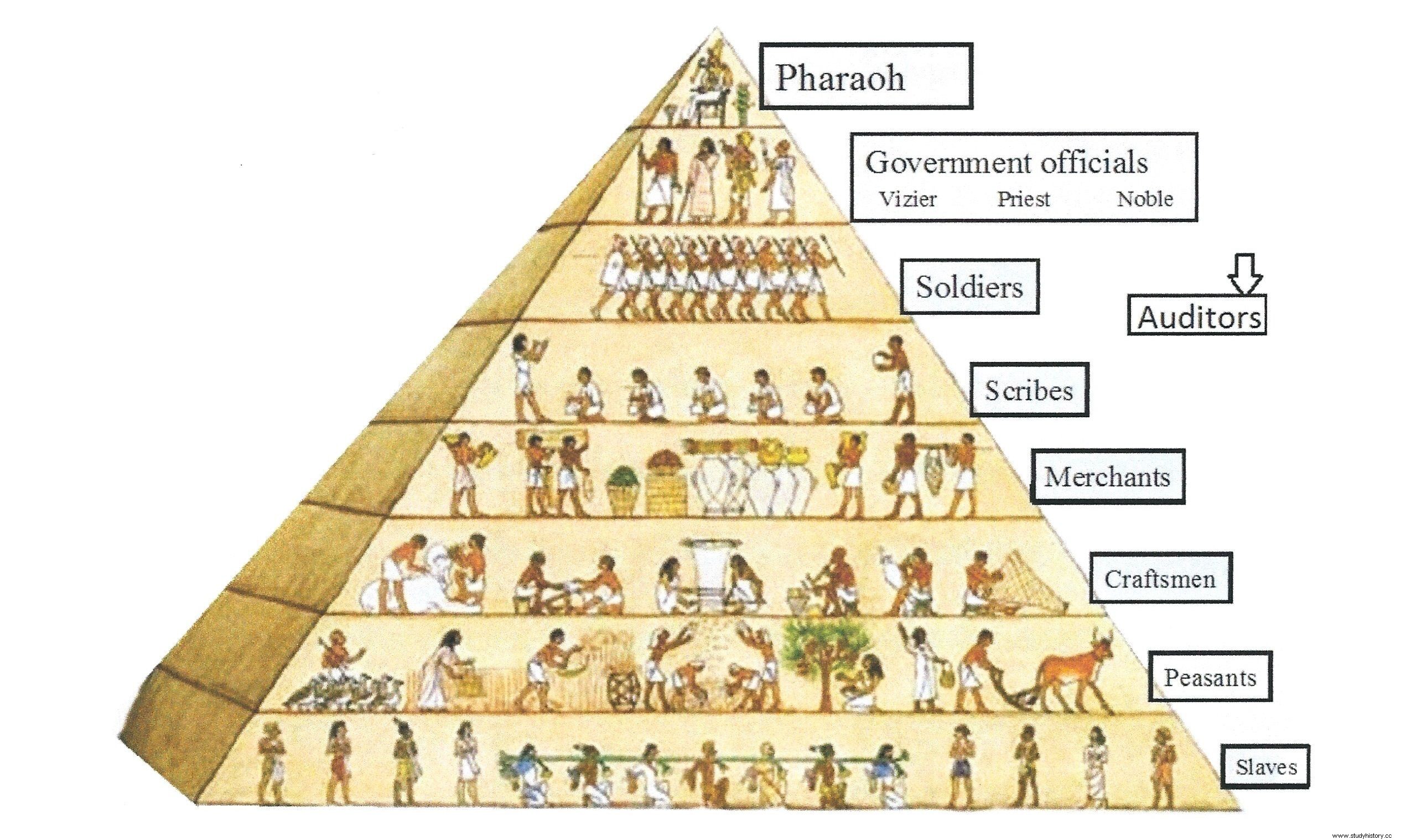
Ancient Egypt was very patriarchal in nature and was dominated by men. The pharaohs or kings were heads of state, and were assisted by a hierarchy of counselors, priests, officials, and administrators. These officials were responsible for the affairs of the state and the welfare of the commons.
According to scientists, without the cooperation of all levels of the population, ancient Egypt could not have achieved such stability and greatness. Although the pharaohs were at the top of the social hierarchy, the viziers were the second most powerful officers in the state. They were the executive leaders of the bureaucracy, which was a position created later in time. This was because the Egyptian monarch was not able to monitor all aspects of society.
Under the viziers were the high priests, who were followed by the royal overseers. They were all responsible for ensuring that the 42 district governors carried out Pharaoh's orders. At the bottom of the hierarchy were scribes, craftsmen, peasants and workers.
Religion in Ancient Egypt

Religion is the glue that binds communities to nations and creates common understandings and common values that are crucial to the growth of a civilization. Throughout most of Egypt's ancient history, people followed a polytheistic religion. There were a large number of gods and goddesses revered in the ancient religion of Egypt. Most of the rituals, such as prayer and sacrifices, were given to the gods. However, formal religious practices centered on the pharaohs.
The religious roots were planted in Egypt during its prehistoric era and lasted for almost 3500 years. Over the years, the religious beliefs of the ancient Egyptian people would change as the importance of many gods individually increased and decreased.
Ancient Egyptian gods and goddesses
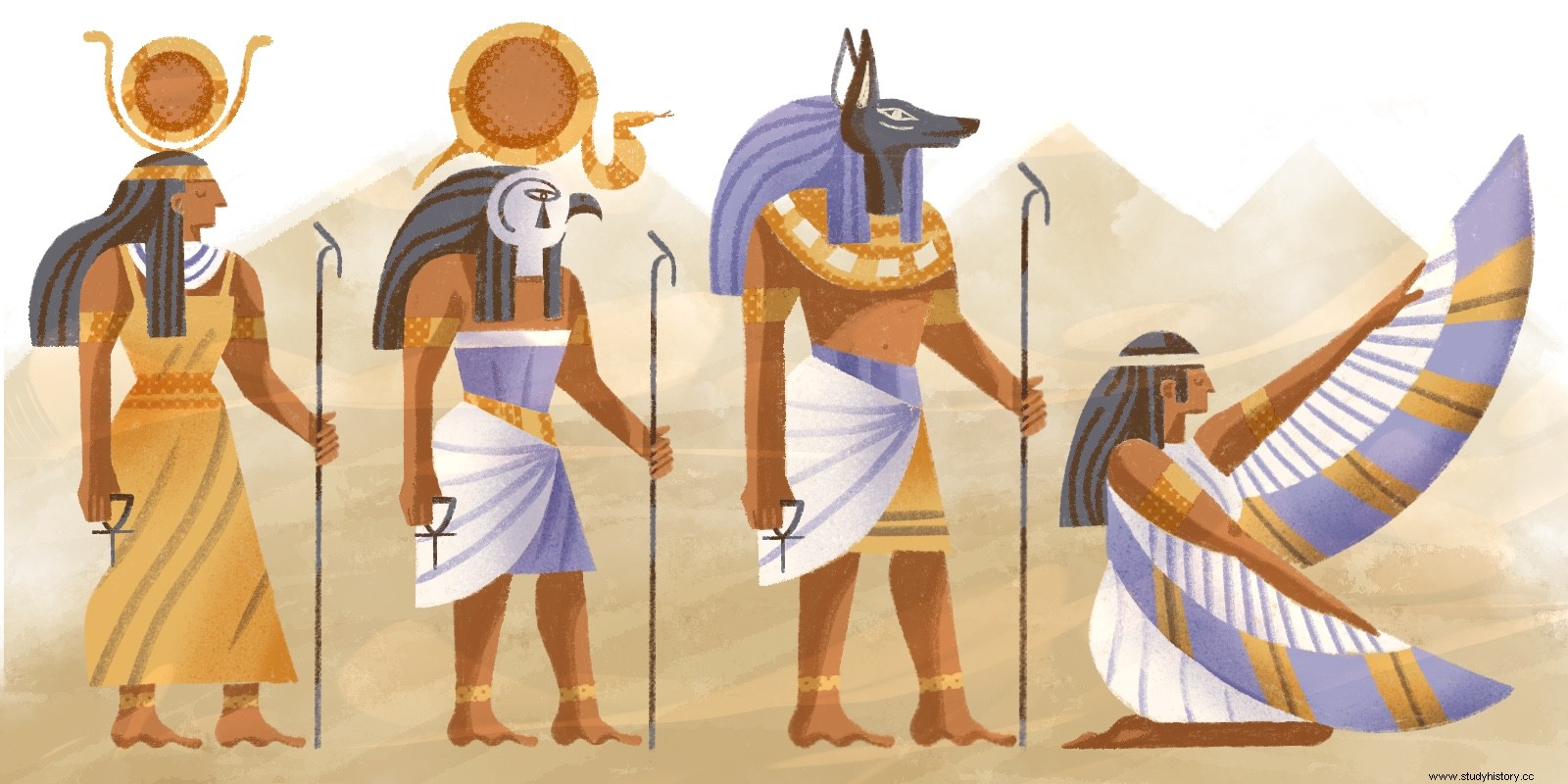
Since ancient Egyptian religion was a complex system of polytheistic beliefs and rituals, there were different gods and goddesses. However, some gods were superior to others. These include,
Ra - god of the sun,
Amun - Creator God,
Isis - The Mother Goddess.
Apart from these, there were a number of gods and goddesses, which include,
Bes - God of sexuality and birth and protector of families
Anubis - God of the Dead
Horus - God of heaven, kingdom, protection and healing
Osiris - God of Death and Resurrection
Seen - God of chaos
Maat - The Goddess of Truth, Justice and Order
Thoth - God of Wisdom
For a short period in the history of ancient Egypt, Pharaoh Akhenaten had replaced traditional gods with a single god, Athens. However, it did not last very long, and polytheism was restored in ancient Egypt later.
Norms and Beliefs of Ancient Egypt

Ancient Egyptian religions consisted of a large and varied set of beliefs and practices. These involved their strong belief in cosmology, kingdom, afterlife, etc. The common focus behind these beliefs was to interact between the human world and the divine.
cosmology
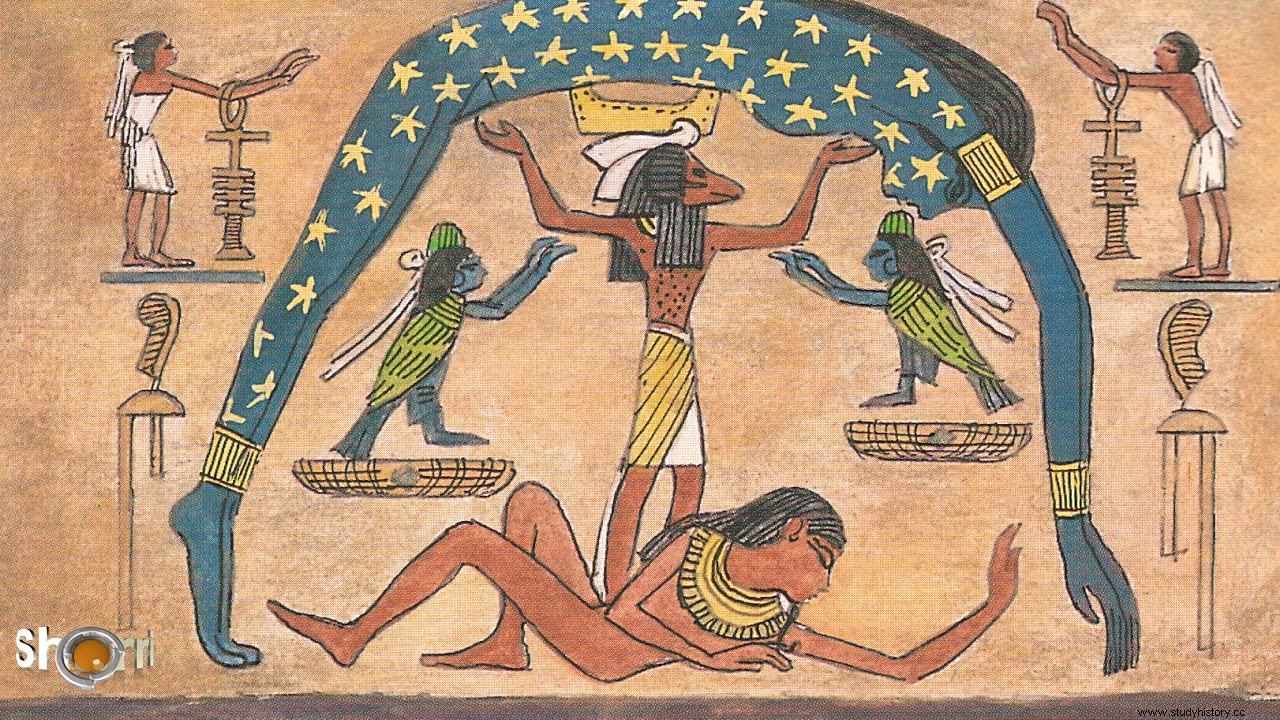
The Egyptian conception of the universe centered on Ma'at. According to Egyptian belief, Ma'at was constantly threatened by the forces of disorder, so the whole community was required to maintain it. In the human sense, this meant that all members of the middle society should cooperate and coexist. Moreover, this meant that all the forces of nature, including the god, were to continue to function in balance. To maintain balance, ancient Egyptians used to perform rituals, which supposedly averted disorder and perpetuated the cycles of nature.
The most important part of the Egyptian view of the cosmos, however, was the perception of time. According to Egyptian belief, a cyclical pattern used to repeat itself over the course of linear time. It was believed that Ma'at through this pattern was renewed by periodic events that repeated the original creation. Some of these events include the annual Flood, the legacy of one king to another, etc. However, the most important was the daily journey of the sun god Ras.
Kingdom

In ancient Egypt, the king or pharaohs were seen as the reincarnation of God. They were generally associated with many specific deities. According to Egyptian belief, the pharaohs were directly identified as Horus, who represented the kingdom. During the New Kingdom, however, Pharaoh became associated with Amun, the supreme power in the cosmos. Pharaoh was believed to be the key to maintaining Ma'at, both by maintaining justice and harmony in human society and by maintaining the gods with temples and offerings. After the king's death, it was believed that he would be completely deified, and was believed to identify directly with Ra. Sometimes the dead pharaoh was also associated with Osiris, the god of death and rebirth.
Afterlife
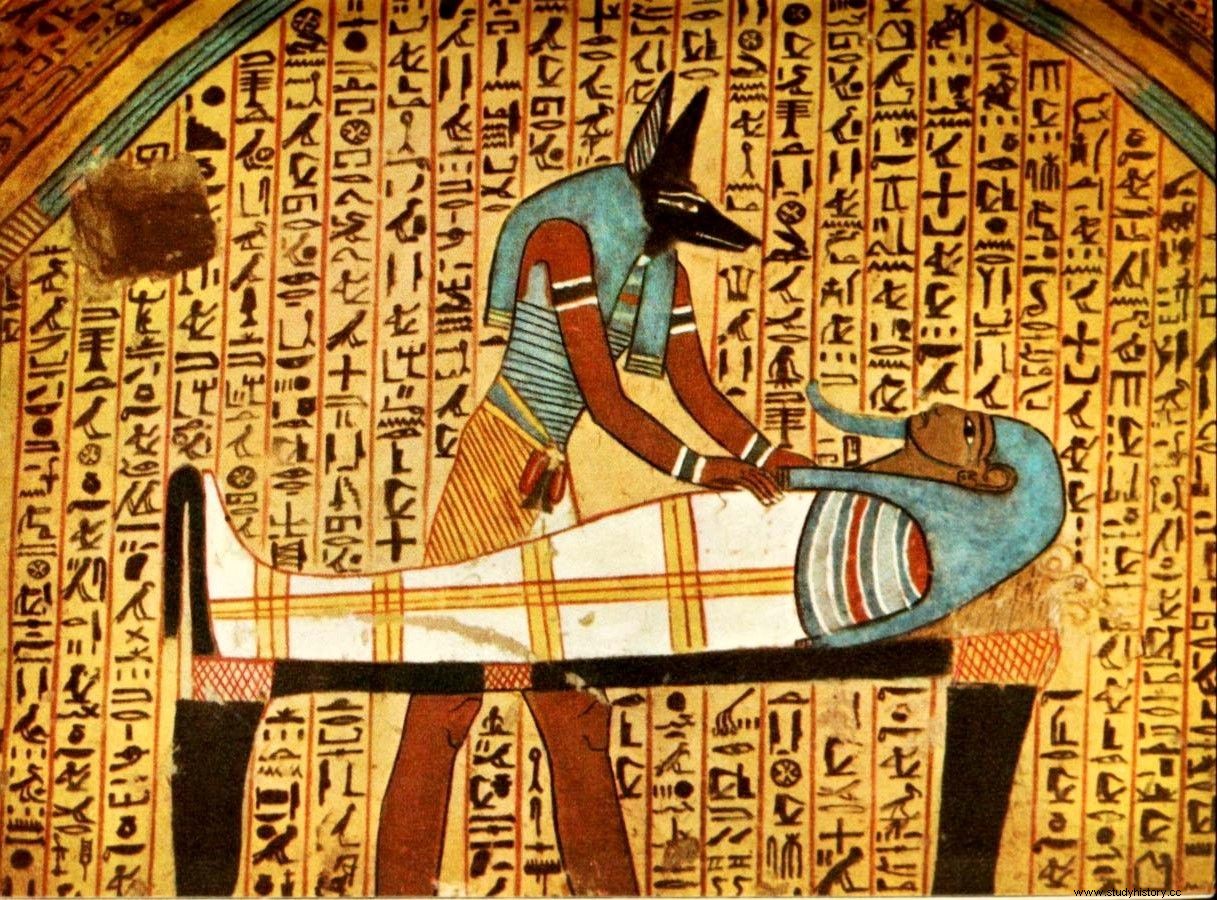
The ancient Egyptians had elaborate ideas about death and life after death. They believed that souls were immortal. According to their beliefs, the human body is possessed by ka, or life force. This kaen is what leaves the body when a person dies. According to ancient Egyptians, after enduring death, ka must continue to receive food offerings. This is because the cow in life has been nourished by food and drink.
Ancient Egyptians also believed that each person had a ba, which is a set of spiritual qualities that are unique to each individual. According to their beliefs, ba remained attached to the dead body, unlike ka. The ancient Egyptian burial rites were meant to ensure that prayers were released from the body. They thought that after being released, they would ask to join the ka again and live on as an akh. However, they also believed that ba returned to his body every night to get a new life, and appeared in the morning as an akh. This is why it was important to preserve the body of the deceased in ancient Egypt.

The ancient Egyptian people believed in a variety of customs and traditions and performed them carefully, with respect and faith. In ancient Egypt, there were mortuary temples that served the spirits of dead pharaohs, as well as temples dedicated to patron deities. The distinction between them, however, became blurred, as divinity and kingdom were closely intertwined. The state-run temples used to serve God, where their physical images were taken care of and provided with offerings. These temples were central to Egyptian society, and enormous resources were donated for their maintenance. Although it was the duty of the pharaohs to perform temple rituals, they were mostly performed by the priests.
The mummification process
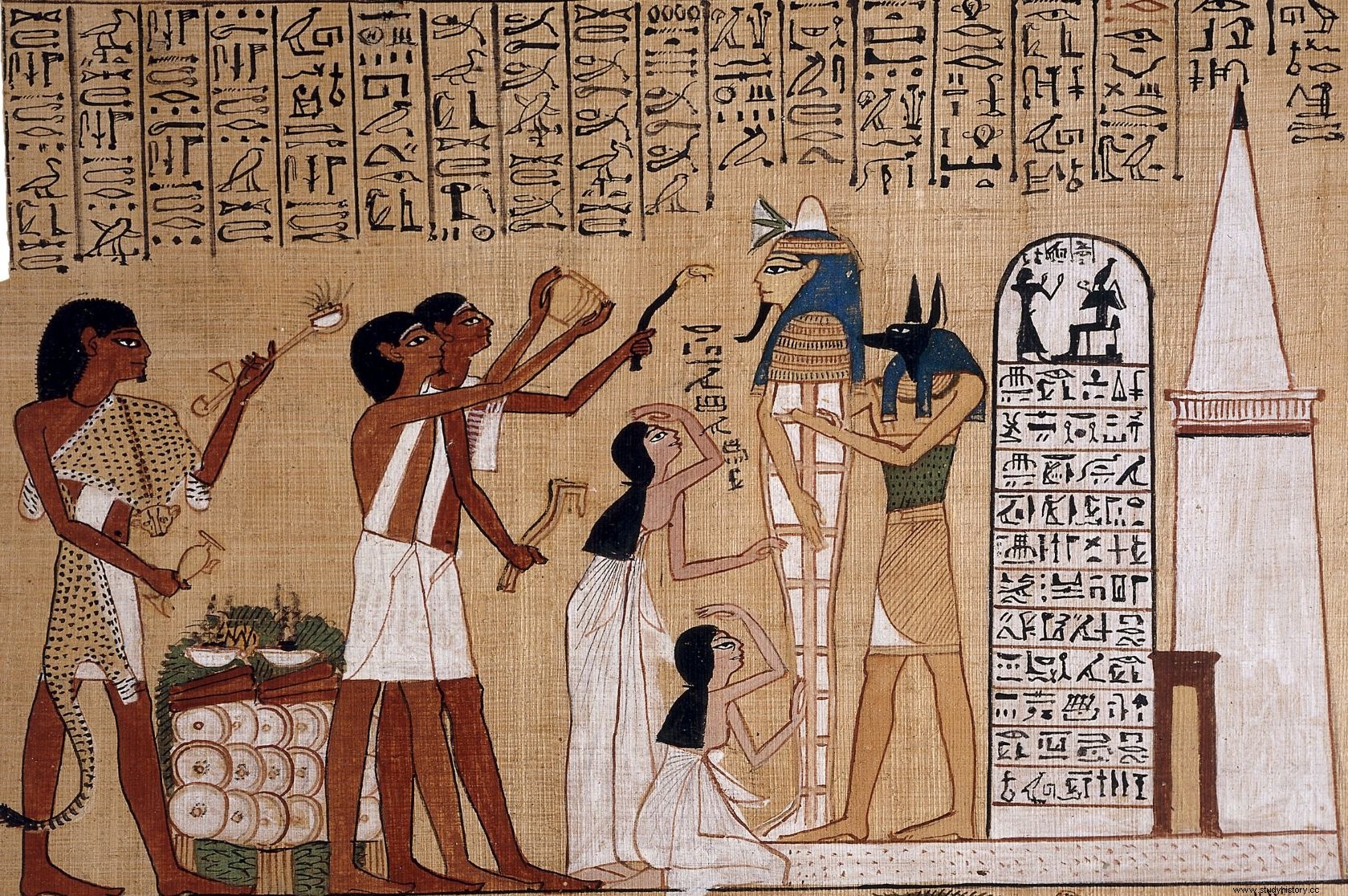
mummification, or preservation of a dead body, is a process that was described in the ancient pyramid texts. The Egyptian people believed in the resurrection and the concept of eternal life. This is why they used to follow a very complex custom of mummification. According to Egyptian belief, the body had to be preserved through mummification and given properly furnished tombs with everything needed in the afterlife.
The mummification process involved important steps to follow. First, the body was dried up, and then the internal organs were removed. The body was then filled with nile mud, sawdust, lichen and cloth remnants to make it more flexible. Then the body was washed and wrapped in linen and soaked in resin and oils. And then they were placed in a giant sarcophagus and placed in the resting graves.
Art from Ancient Egypt

Ancient civilization in Egypt flourished in aspects of art, creating milestones in paintings, sculptures and drawings, earthenware, jewelry, ivory, architecture and other art media. Most of the surviving art forms, which have come from the tombs, have provided a brief insight into Egyptian beliefs and ideas about life after death.
Architecture

Ancient Egyptian architecture has been one of the most fascinating and confusing aspects of civilization so far. The pyramids and the sphinx, which are still part of the seven wonders of the ancient world, continue to raise questions about how they were built before all the technological advances.
According to researchers, ancient Egyptian architects used sun-dried and oven-baked bricks, fine sandstone, limestone and granite. The stone had to fit perfectly to form the structure of the pyramids correctly. When the pyramids were created, ramps were used to allow workers to move up as the height of the structure increased. When the top of the structure was finished, the artists decorated from the top down, while removing ramp sand as they went down. The outside of the pyramids contained only a few small openings. The interior was decorated with hieroglyphic and pictorial carvings with colors.
Funeral Art
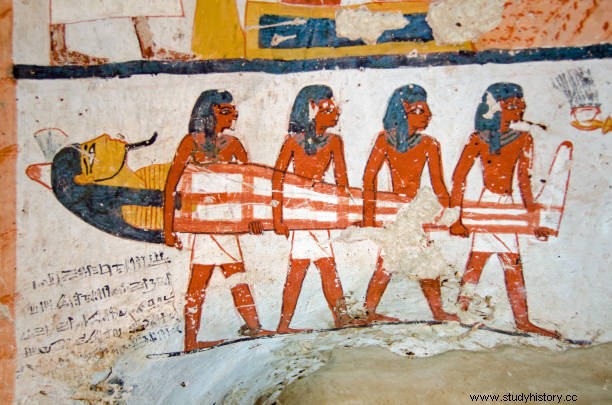
Funerary Art is another of the art forms that ancient Egypt is known for all over the world. This involves chests, Canopic jars, masks, etc.
The coffins were usually made of wood, especially of imported cedar wood of good quality. Later the material in the coffins began to change, most sumptuous coffins were made of glass or precious stones. However, the royal coffins were made of gold or silver.
Canopy jars were the vessels used to store the internal organs that were removed during mummification. These were usually made of stone or pottery, and were placed under the symbolic protection of one of Horus' four sons.
Funeral masks, mostly made of gold, were widely used in ancient Egypt. The purpose of the mask, as it is believed, was to transform the wearer from a mortal to a divine state.
The conclusion

Even after so much has already been discovered, ancient Egypt is still engrossed in so much mystery. Today, Egyptian archaeologists are still making important discoveries. The scientific study of royal mummies sheds new light on the genealogy of the pharaohs. The process of interpreting hieroglyphic writings is still ongoing. All of these indicate the fact that the more we have left to know about this civilization.
Ancient Egypt | History, Government, Culture, Maps and Facts
Egypt's Mysteries
Ancient Egyptian religion
